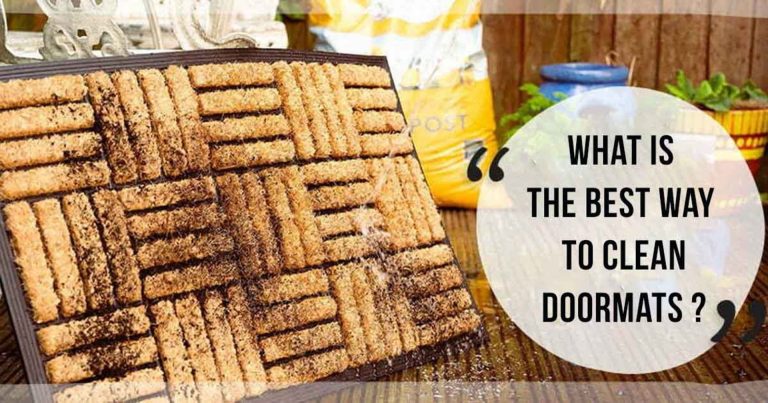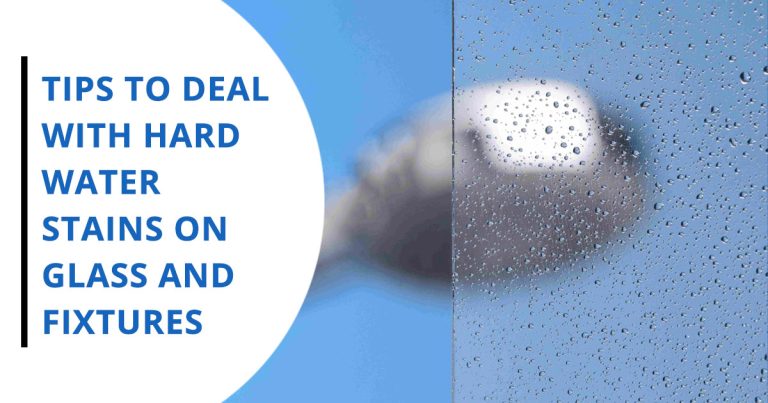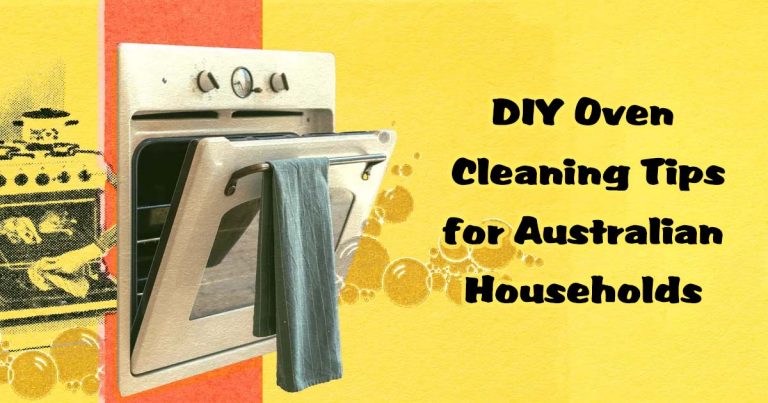Table of Contents
Introduction:
Keeping your upholstery clean can be a challenge, especially in busy households with kids, pets, and frequent guests. While professional cleaning is important, there are many DIY upholstery cleaning hacks that can help you maintain your furniture between deep cleans. This guide provides practical, budget-friendly tips for Australian families to keep their upholstery looking fresh and clean with everyday household items.

Using Everyday Household Items for Effective Cleaning
You don’t need to invest in expensive cleaning products to keep your upholstery clean. Many everyday household items can be just as effective:
- Baking Soda: Sprinkle baking soda over your upholstery and let it sit for 15-20 minutes before vacuuming it up. It helps to absorb odors and loosen dirt, making it easier to clean.
- White Vinegar: A mixture of equal parts white vinegar and water can be used to spot clean stains. Dab the solution onto the stain with a cloth and blot until the stain lifts.
- Dish Soap: A small amount of dish soap mixed with water can be used to gently clean fabric upholstery. Apply with a soft cloth or sponge, blotting gently to lift dirt and stains.
- Cornstarch: For greasy stains, sprinkle cornstarch on the spot and let it sit for a few hours before vacuuming it up. Cornstarch absorbs the grease, making it easier to remove. You can also make a cornstarch paste with a bit of water for more stubborn spots, or use it as a dry shampoo for fabrics to freshen up cushions and armrests.
- Lemon Juice: Ideal for light-coloured fabrics, lemon juice is a natural stain lightener—particularly effective on rust or tannin stains (like tea and coffee). Mix it with a little salt to make a cleaning paste that’s great for spot treatments, plus it leaves a fresh, pleasant scent behind.
- Rubbing Alcohol (Isopropyl Alcohol): This handy household staple acts as a solvent, making it perfect for tackling stains like ink, grease, or certain dyes that water alone can’t shift. Dab gently but keep it away from delicate fabrics like silk or wool, and always use it in a well-ventilated area away from open flames.
- Baby Wipes: While not a pantry item, baby wipes are a lifesaver for quick touch-ups and emergency spills. Their gentle formula and soft texture make them ideal for small spots on fabric sofas—just don’t use them for every clean, as it can get pricey.
- These common household items are safe, effective, and readily available, making them ideal for quick upholstery cleaning. With a little creativity and the right know-how, you can tackle everything from everyday dirt to unexpected spills without breaking the bank. These common household items are safe, effective, and readily available, making them ideal for quick upholstery cleaning.
Step-by-Step: Cleaning Your Sofa with Baking Soda and Vinegar
Combining baking soda and vinegar is a tried-and-true trick for tackling tough stains and freshening up upholstery. Here’s a simple way to harness their cleaning power for your sofa:
- Sprinkle the Baking Soda:
Dust a generous layer of baking soda directly onto any stains or areas that need a refresh. Let it sit for about 15–20 minutes. This gives the baking soda time to absorb odors and start loosening dirt. - Mix the Cleaning Solution:
Fill a spray bottle with equal parts white vinegar and water, then add a small squirt of dish soap (such as Morning Fresh or a similar gentle detergent). This blend boosts cleaning and helps cut through grease. - Spray and Activate:
Lightly mist the vinegar mixture over the baking soda-covered spots. You’ll notice a fizzy reaction as the two combine—this bubbling helps lift grime from deep within the fabric fibers. - Let It Work:
Allow the bubbly mixture to sit and work its magic for around 10 minutes. The reaction helps break up stubborn stains and draws dirt to the surface. - Gently Scrub:
Using a soft brush or a clean cloth, gently scrub the treated areas in a circular motion. This helps the solution penetrate and lifts dirt away from the upholstery. - Wipe Away Residue:
Finally, use a damp cloth to wipe down the sofa and remove any remaining baking soda or vinegar. Be thorough—leftover residue can attract dust if not completely removed.
This easy method not only deep-cleans your upholstery but also leaves it smelling fresher—no harsh chemicals required!

How to Make Your Own Upholstery Cleaner
Creating your own upholstery cleaner is easy and allows you to control the ingredients, ensuring they are safe for your family and pets:
You may also like to read about-“10 Reasons You Should Hire A Professional Upholstery Cleaning Service“
- Simple All-Purpose Cleaner: Mix 1 cup of warm water with 1/4 cup of white vinegar, 1/4 cup of rubbing alcohol, and a few drops of dish soap. This solution is effective on most upholstery fabrics and can be used for general cleaning and stain removal.
- Natural Deodorizer: Combine 1/2 cup of baking soda with 10 drops of your favorite essential oil. Sprinkle the mixture over your upholstery, let it sit for 20 minutes, and then vacuum it up. This leaves your furniture smelling fresh and clean.
- Fabric Refresher: Mix 2 cups of water with 1 tablespoon of baking soda and 1 tablespoon of fabric softener in a spray bottle. Lightly mist your upholstery to freshen it up between cleanings. By making your own cleaners, you can avoid harsh chemicals and create a healthier home environment.
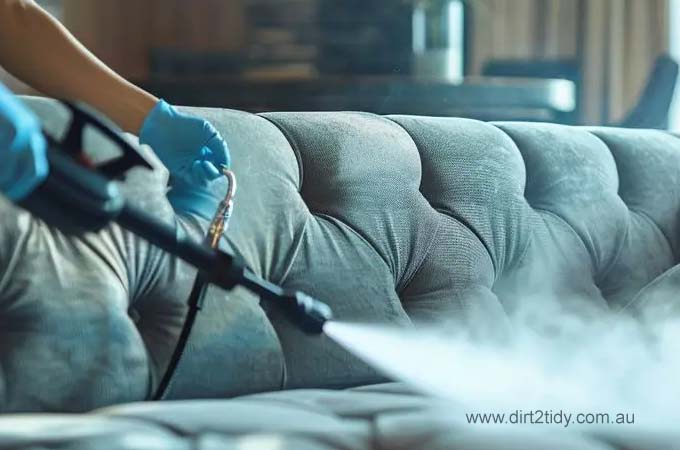
Why You Should Avoid Harsh Chemicals on Upholstery
Although bleach, ammonia, and acetone (found in nail polish remover) are great for heavy-duty cleaning around the house, they’re a no-go when it comes to caring for your upholstered furniture. While you might be tempted to use these strong chemicals in the hope of removing stubborn stains, they can do far more harm than good.
- Bleach can strip away colour from fabric, leaving noticeable faded spots or uneven patches. It’s particularly harsh on delicate materials like wool and silk, often weakening the fibres and making them prone to tearing. On top of that, bleach produces strong fumes that aren’t safe to breathe in—especially in spaces where you and your family spend a lot of time.
- Ammonia may power through grease in your kitchen, but it’s likely to fade or discolour your sofas and chairs. Over time, it can break down the fabric’s fibres, leading to wear and a much shorter lifespan for your furniture. The strong odour from ammonia is also an irritant for eyes and lungs, posing risks in poorly ventilated areas. Worse still, mixing ammonia with other chemicals (like bleach) can release toxic gases, which are dangerous to both your household and the environment.
- Acetone, commonly found in nail polish remover, is just as risky. It’s a potent solvent, which means it can dissolve or loosen dyes and certain fabrics, leaving behind permanent stains or even holes. What might work wonders on a stubborn adhesive is simply too aggressive for upholstery.
To keep your furniture looking fresh and lasting longer, it’s best to stick to gentle, fabric-safe cleaners rather than reaching for the harsh stuff under the sink.
Step-by-Step Guide to Removing Tough Stains
Dealing with tough stains can be frustrating, but with the right approach, you can remove them without damaging your upholstery:
- Blot the Stain: As soon as a spill occurs, blot it with a clean, dry cloth to soak up as much liquid as possible. Avoid rubbing, as this can spread the stain.
- Apply Cleaning Solution: Use a DIY or store-bought cleaner suitable for your fabric type. Apply it to a cloth (not directly on the stain) and gently blot the area, working from the outside in to prevent the stain from spreading.
- Rinse and Blot: Dampen a clean cloth with water and blot the area to rinse out the cleaner. Make sure to remove all residues to prevent water spots.Residue from soaps or detergents can leave a tacky layer on your upholstery, which not only attracts more dirt and dust but can also cause the fabric to look dingy more quickly. Taking the time to thoroughly rinse ensures your upholstery stays cleaner longer and prevents that sticky buildup that can make future stains even harder to remove.
- Dry Completely: Allow the area to air dry completely. If necessary, use a fan or hairdryer on a low setting to speed up the drying process.
- Repeat if Necessary: For particularly stubborn stains, you may need to repeat the process a few times to fully remove the mark. By following these steps, you can effectively tackle even the most challenging stains on your upholstery.
[lead-form form-id=1 title=Fill to Get Free Cleaning Checklist]
Protecting Surrounding Areas and Flooring
Before you begin cleaning your sofa, it’s important to safeguard any nearby surfaces that could be affected by moisture or cleaning products. Lay down old towels, drop cloths, or even an unused bedsheet around the base of your sofa to catch any drips or spills—this simple step can prevent water or cleaning solutions from reaching wooden floors or carpeting, which can be easily stained or damaged.
If your sofa has metal or wooden legs, give them a quick cover with a small towel or some plastic wrap to avoid accidental splashes. Always open windows or doors to ensure good airflow, especially if you’re using a strong cleaning agent—ventilation helps protect both you and your home from lingering fumes. Taking these precautions means you can focus on the cleaning itself, confident that your flooring and surrounding surfaces are safe.
The Best Techniques for Spot Cleaning
Spot cleaning is essential for maintaining the appearance of your upholstery between deep cleans:
- Use a Microfiber Cloth: Microfiber cloths are gentle on fabric and highly effective at lifting stains without leaving lint behind.
- Blot, Don’t Rub: Always blot stains gently rather than rubbing them. Rubbing can push the stain deeper into the fabric and damage the fibers.
- Work from the Outside In: Start at the edges of the stain and work your way toward the center to contain the spill and prevent it from spreading.
- Test First: Always test your cleaning solution on a hidden area of the upholstery to ensure it doesn’t cause discoloration or damage.
- Be Patient: Give the cleaner time to work, and avoid using too much liquid, as oversaturating the fabric can lead to water stains. These techniques ensure that your spot cleaning efforts are effective and safe for your upholstery.
Extra Spot Cleaning Tips and Precautions
To make your spot cleaning both safe and successful, keep these additional pointers in mind:
- Check for Hidden Risks: Not all upholstery fabrics react the same way to cleaning solutions. Testing your cleaner on an inconspicuous area—like under a cushion or along the back—helps avoid unpleasant surprises such as color bleeding or fabric damage, especially on sofas without visible cleaning code tags.
- Control Moisture: Excess moisture can seep deep into cushions and padding, potentially causing mold, mildew, or even warping and swelling of any internal wooden frames. Always use the least amount of liquid necessary and extract as much moisture as possible after cleaning. Let the area air dry fully—avoid blasting it with a hair dryer, as this can damage the fabric.
- Protect Surroundings: Before you start, cover adjacent surfaces such as wooden floors or metal sofa parts with a towel or tarp. Some cleaning solutions may drip or splatter, and you don’t want to risk staining or corroding nearby materials. Work in a well-ventilated space, particularly if you’re using products that have strong fumes.
- Rinse and Remove Residue: Soapy or detergent residues can leave upholstery feeling sticky, which attracts dust and dirt more quickly. After spot cleaning, blot the area with a clean, damp cloth to remove any lingering product, then allow the fabric to dry completely. This helps your upholstery stay cleaner for longer.
By following these techniques and precautions, you’ll keep your upholstery looking its best while minimizing the risk of damage—making your DIY cleaning efforts both safer and more effective.

How to Refresh and Deodorize Your Upholstery
Over time, upholstery can absorb odors from pets, food, and everyday use. Here’s how to keep it smelling fresh:
- Baking Soda: As mentioned earlier, baking soda is excellent for neutralizing odors. Sprinkle it on your upholstery, let it sit, and vacuum it up for a quick refresh.
- Vinegar Spray: Mix equal parts white vinegar and water in a spray bottle and lightly mist your upholstery. Vinegar naturally neutralizes odors and evaporates quickly, leaving no residue.
- Essential Oils: Add a few drops of essential oil to your baking soda before applying it to your upholstery. This not only removes odors but also leaves a pleasant fragrance behind.
- Vacuum Regularly: Regular vacuuming helps to remove dust and dirt that can contribute to unpleasant odors. Use the upholstery attachment on your vacuum cleaner for the best results. Refreshing and deodorizing your upholstery regularly keeps your furniture smelling clean and inviting.
Tips for Preventing Future Stains
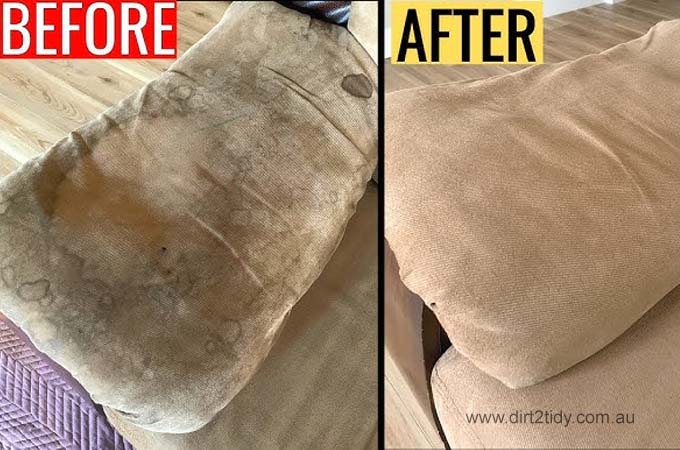
Prevention is key to keeping your upholstery looking its best. Here are some tips to help avoid stains:
- Use Slipcovers: Slipcovers are an excellent way to protect your upholstery from spills, stains, and everyday wear. They can be easily removed and washed as needed.
- Set House Rules: Encourage eating and drinking in designated areas to reduce the risk of spills on your upholstered furniture.
- Keep Cleaning Supplies Handy: Have a small cleaning kit with essentials like a cloth, a mild detergent, and water ready for quick action when spills occur.
- Apply Fabric Protector: After cleaning, apply a fabric protector spray to create a barrier that repels liquids and stains. Reapply the protector every few months for ongoing protection. Taking these preventive measures can help maintain the appearance of your upholstery and reduce the need for frequent deep cleaning.
You may also like to read about-“What is the Best Carpet and Upholstery Cleaner”
When to Consider Professional Help
While DIY methods are effective for regular maintenance, there are times when professional cleaning is the best option:
- Deep-Set Stains: If you have stains that don’t respond to DIY methods, it’s time to call in a professional. They have the tools and expertise to remove even the toughest stains without damaging the fabric.
- Allergen Control: Professional cleaning can effectively remove dust mites, pet dander, and other allergens that can accumulate in your upholstery over time.
- Large or Delicate Items: For large pieces of furniture or delicate fabrics, professional cleaning ensures thorough cleaning without the risk of damage.
- Annual Maintenance: Even with regular DIY cleaning, it’s a good idea to have your upholstery professionally cleaned once a year to keep it in top condition. How often you need professional help, however, can vary depending on your household. If you have kids, pets, or a particularly busy home—think frequent gatherings or dinner parties—your furniture may benefit from more frequent deep cleans. On the other hand, a rarely used guest room or a low-traffic bachelor pad might not need attention as often. Paying attention to the unique demands of your living space ensures your upholstery receives the care it needs to stay clean and comfortable. Knowing when to call in the professionals ensures your upholstery receives the care it needs to stay clean and comfortable.
You may also like to read about-“Expert Advice on Maintaining Your Car’s Interior: From Upholstery to Dashboard”
What Factors Influence the Cost of Professional Sofa Cleaning?
Just as no two sofas are the same, the price tag for professional sofa cleaning can vary depending on several key factors. Before you book a service, it’s helpful to understand what affects the final cost:
- Type of Upholstery: Different fabrics call for different cleaning methods. Leather, suede, and velvet all require extra care, often involving specialised products, which can bump up the price compared to standard fabric sofas.
- Size and Structure: Larger pieces like sectionals or modular lounges need more elbow grease and cleaning solution. The bigger the piece, the more you can expect to pay.
- Current Condition: Is your sofa just a bit dusty, or is it home to mystery stains and pet paw prints? Heavily soiled or stained sofas may require deeper, more time-consuming treatments, which can increase the overall bill.
- Location: Where you live matters. Professional cleaning usually costs more in major cities than in smaller towns due to higher labour expenses and operational costs. Some cleaners might even charge a call-out or travel fee if you’re outside their usual service zone.
- Extra Services: Want a stain-resistant spray or a deodorising treatment added? Additional protective products or specialty care typically come at an additional cost.
Before giving the green light, always ask for a detailed, written quote. That way, there are no surprises when it’s time to settle up, and you’ll know exactly what’s covered.
With these points in mind, you’ll be able to make a more informed decision about caring for your sofa and keeping it in tip-top shape, no matter what life—or the Australian weather—throws at it.
How to Protect Your Upholstery from Australia’s Weather Conditions
Australia’s climate, with its extremes of heat, humidity, and dust, can be harsh on upholstery. Here’s how to protect your furniture:
- Limit Sun Exposure: Keep your furniture out of direct sunlight to prevent fading and fabric deterioration. Use curtains, blinds, or UV-blocking window films to protect your upholstery from the sun’s harmful rays.
- Use Dehumidifiers: In areas with high humidity, use dehumidifiers to reduce moisture levels and prevent mold and mildew growth on your upholstery.
- Regular Dusting: Regularly dust and vacuum your upholstery to prevent dust buildup, especially if you live in a dry, dusty area.
- Ventilation: Ensure proper ventilation in your home to reduce the risk of mold and mildew, particularly in humid or coastal regions. By adapting your care routine to Australia’s unique climate conditions, you can prolong the life and appearance of your upholstery.
Conclusion:
DIY upholstery cleaning is a practical and cost-effective way to maintain your furniture, especially in busy Australian households. By using everyday household items, creating your own cleaners, and following these simple hacks, you can keep your upholstery looking fresh and clean between professional cleanings. Whether you’re dealing with tough stains, refreshing your furniture, or protecting it from Australia’s challenging climate, these tips will help you enjoy beautiful, well-maintained upholstery for years to come.



